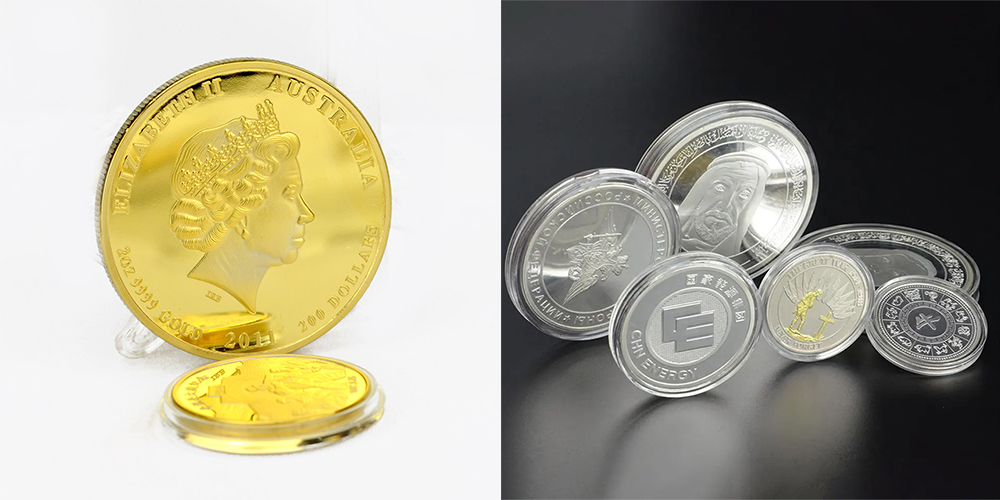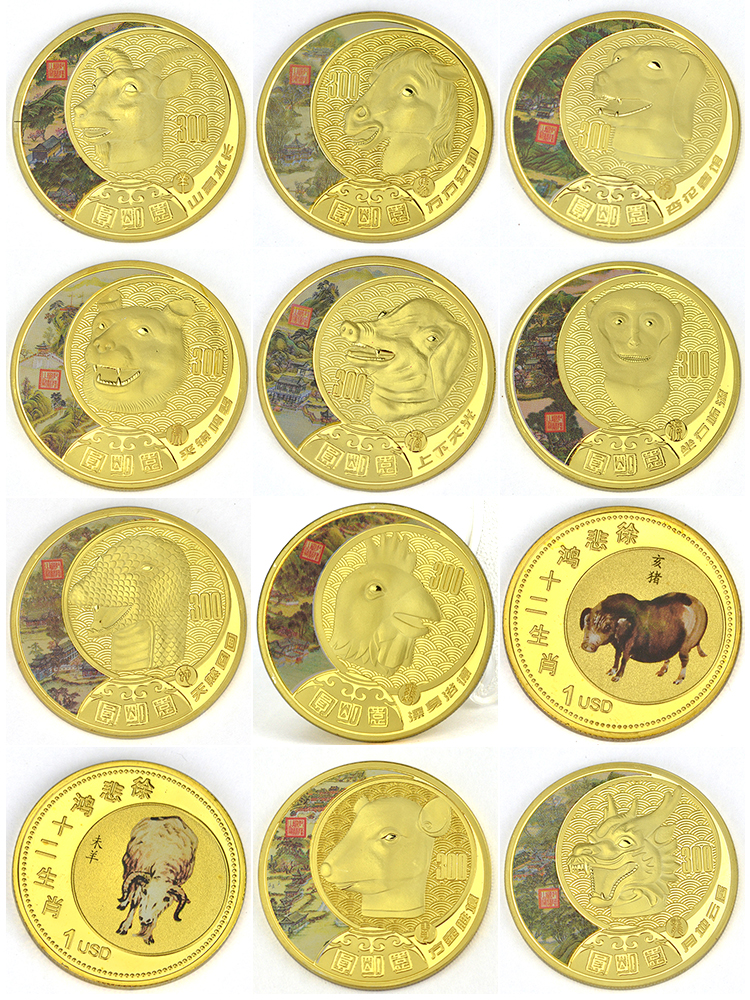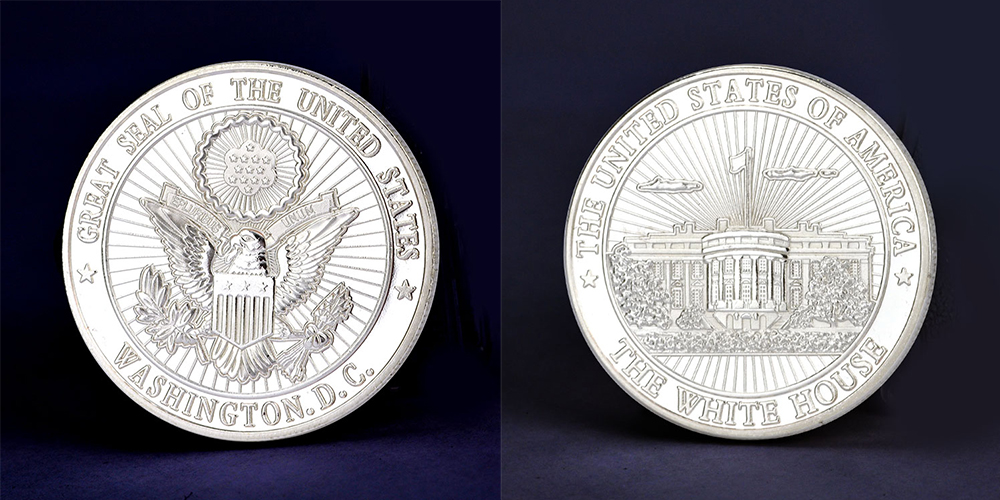Do you know about precious metal commemorative coins?
How to distinguish precious metals
In recent years, the precious metal commemorative coin trading market has flourished, and collectors can purchase from primary channels such as Chinese coin direct sales institutions, financial institutions, and licensed retailers, as well as trade in secondary markets. Against the backdrop of booming transactions, counterfeit and inferior precious metal commemorative coins have also occurred from time to time. For collectors who have had limited exposure to precious metal commemorative coins, they often have doubts about the authenticity of commemorative coins purchased outside official channels due to the lack of professional testing equipment and knowledge of coinage techniques.
In response to these situations, today we will introduce some techniques and basic knowledge applicable to the public to distinguish the authenticity of precious metal commemorative coins.
The basic characteristics of precious metal commemorative coins
01
Material: Precious metal commemorative coins are usually made of high-value precious metals such as gold, silver, platinum, or palladium. These metals endow commemorative coins with precious value and unique appearance.
02
Design: The design of commemorative coins is usually exquisite and meticulous, including various patterns, texts, and decorations to commemorate specific events, characters, or themes. The design may cover historical events, cultural symbols, celebrity avatars, etc.
03
Limited Issue: Many precious metal commemorative coins are issued in limited quantities, which means that the quantity of each coin is limited, increasing its collectible value and scarcity.
04
Weight and Purity: Precious metal commemorative coins are usually marked with their weight and purity to ensure that investors and collectors understand their actual value and quality.
05
Collection value: Due to its uniqueness, limited quantity, and precious materials, precious metal commemorative coins usually have high collection value and may increase in value over time.
06
Legal status: Some precious metal commemorative coins may have legal status and can be used as legal tender in certain countries, but they are usually more regarded as collectibles or investment products.
Specification and Material Identification of Precious Metal Commemorative Coins
The identification of product specifications and materials is also an important tool for the public to distinguish the authenticity of precious metal commemorative coins.
China Gold Coin Network Query
Except for the Panda Precious Metal Commemorative Coin, other precious metal commemorative coins issued in recent years are generally no longer marked with weight and condition on the coin surface. Collectors can use the method of graphic recognition to search for information on the weight, condition, specifications, and other information of precious metal commemorative coins for each project through the China Gold Coin Network.
Entrust a qualified third-party testing agency
In recent years, the precious metal commemorative coins issued in China are all made of 99.9% pure gold, silver, and platinum. Except for a small number of counterfeit coins that use 99.9% pure gold and silver, most counterfeit coins are made of copper alloy (surface gold/silver plating). The non-destructive color inspection of precious metal commemorative coins generally uses an X-ray fluorescence spectrometer (XRF), which can perform non-destructive qualitative/quantitative analysis of metal materials. When collectors confirm the fineness, they should note that only XRF equipped with precious metal analysis programs can quantitatively detect the fineness of gold and silver. The use of other analytical programs to detect precious metals can only qualitatively determine the material, and the displayed detection results may differ from the true color. It is recommended that collectors entrust qualified third-party testing institutions (using GB/T18043 standard for testing) to test the quality.
Self inspection of weight and size data
The weight and size of precious metal commemorative coins issued in our country are produced according to standards. There are positive and negative deviations in weight and size, and collectors with conditions can use electronic scales and calipers to test relevant parameters. The positive and negative deviations can refer to the gold and silver coin standards in the financial industry in China, which also specify parameters such as the number of thread teeth for commemorative coins of different specifications. Due to the implementation time and revision of the gold and silver coin standards, the deviation range and number of thread teeth listed in the standards are not applicable to all precious metal commemorative coins, especially early issued commemorative coins.
Process identification of precious metal commemorative coins
The coinage process of precious metal commemorative coins mainly includes sandblasting/bead spraying, mirror surface, invisible graphics and text, miniature graphics and text, color transfer printing/spray painting, etc. Currently, precious metal commemorative coins are generally issued with both sandblasting and mirror finish processes. The sandblasting/bead spraying process is to use different quantities of sand particles (or beads, also using lasers) to spray the selected graphics or surfaces of the mold into a frosted surface, creating a sandy and matte effect on the surface of the imprinted commemorative coin. The mirror process is achieved by polishing the surface of the mold image and the cake to create a glossy effect on the surface of the imprinted commemorative coin.
It is best to compare the real coin with the product to be identified, and make a detailed comparison from various processes. The relief patterns on the back of precious metal commemorative coins vary depending on the project theme, making it difficult to distinguish authenticity through the relief on the back without corresponding real coins or high-definition photos. When the comparison conditions are not met, special attention should be paid to the relief, sandblasting, and mirror processing effects of the products to be identified. In recent years, most of the gold and silver coins issued have fixed relief patterns on the obverse of the Temple of Heaven or the national emblem. Collectors can avoid the risk of buying counterfeit coins by searching and memorizing the characteristics of this conventional pattern.
In recent years, some counterfeit coins have been found to have front relief patterns that are close to real coins, but if carefully identified, their craftsmanship is still significantly different from real coins. The sandblasting on the real coin surface presents a very uniform, delicate, and layered effect. Some laser sandblasting can be observed in a grid shape after magnification, while the sandblasting effect on counterfeit coins is rough. In addition, the mirror surface of real coins is flat and reflective like a mirror, while the mirror surface of counterfeit coins often has pits and bumps.
Post time: May-27-2024








